The Global Conclave on the Future of Biosensors and Bioelectronics will provide researchers, academics, and industry professionals with a unique opportunity to explore the latest innovations and trends in this rapidly evolving field. Some of the top innovations that will be discussed at the conference include:
• Wearable biosensors that enable continuous monitoring of health parameters, such as glucose levels and heart rate, for personalized healthcare.
• Development of nanobiosensors that can detect diseases at an early stage, leading to improved treatment outcomes.
• Integration of artificial intelligence and machine learning algorithms in biosensor systems, leading to improved accuracy and speed of diagnosis.
• Advances in flexible and stretchable electronics that allow biosensors to conform to the shape of the body and offer more comfort and convenience.
• Development of implantable biosensors that can monitor biomarkers in real-time, leading to improved disease management and treatment.
Other innovations that will be discussed at the
Dear Esteemed Guests,
Welcome to the Global Conclave on the Future of Biosensors and Bioelectronics, which will be held on June 20-21, 2024 in the beautiful city of Barcelona, Spain.! We are honoured to welcome you here today to discuss the latest trends and advancements in the biosensors and bioelectronics industry.
The global market for biosensors and bioelectronics is expanding at an unprecedented rate. According to recent reports, the global biosensors market is projected to reach a value of $31.5 billion by 2025, with a CAGR of 8.1% from 2020 to 2025. Similarly, the global bioelectronics market is expected to grow at a CAGR of 9.3% from 2020 to 2025, reaching a value of $37.4 billion by 2025.
This event will be a great opportunity for all attendees to gain valuable insights into this rapidly evolving field, and to explore the latest technologies and trends that are driving growth and innovation. We have brought together experts from across the globe to share their research experience, technologies, and insights on the latest developments in biosensors and bioelectronics.
Throughout the conference, you will have the opportunity to engage in stimulating discussions, participate in workshops, and connect with like-minded individuals who share your passion for advancing the frontiers of science. We are confident that this event will provide a platform for collaboration and networking, foster new ideas, and catalyse the growth of this field.
Once again, a warm welcome to all our attendees, and we look forward to an exciting and productive conference.
With best regards,
Future of BSBE 2024
Organizing Committee
Peers Alley Media, Canada

University Of Regensburg, Germany

Jinan University, China

TDK, Boston, USA

University of Sao Paulo, Brazil
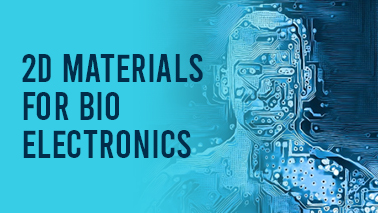
Tags
Biosensors Conferences 2024 China
Biosensors Conferences 2024 Middle East
Switchable Bioelectronics Conferences
Electrochemical Biosensors Conferences
Wearable Biosensors Conferences
Bioelectronics Conferences 2024 Asia
Chemical Sensors and Biosensors Conferences
Bioelectronics Conferences 2024 Canada
Nanobiosensors Conferences
Bioelectronics Conferences 2024 China
Bioelectronics Conferences 2024 USA
Advances in Biosensors Conferences
Biosensor Technology Conferences
Magneto Elastic Biosensors Conferences
Biosensors Conferences
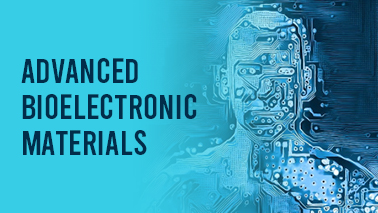
Tags
Biosensors Conferences
Biosensing Meetings
Wearable Bioelectronics Conferences
Nanobiosensors Conferences
Advances in Biosensors Conferences
Electrochemical Biosensors Conferences
Chemical Sensors and Biosensors Conferences
Biosensors Conferences 2024
Optical Biosensors Conferences
Biosensing Annual Conferences 2024
Magneto Elastic Biosensors Conferences
Biosensors Conferences 2024 China
Biosensors Conferences 2024
Wearable Biosensors Conferences
Bioelectronics Conferences 2024 Asia
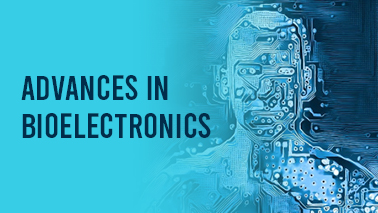
Tags
Nanobiosensors Conferences
Bioelectronics Conferences 2024 Asia
Bioelectronics Conferences 2024 USA
Biosensor Technology Conferences
Electrochemical Biosensors Conferences
Advances in Biosensors Conferences
Chemical Sensors and Biosensors Conferences
Magneto Elastic Biosensors Conferences
Biosensors Conferences
Bioelectronics Conferences 2024
Bioelectronics Conferences 2024 USA
Biosensors Conferences 2024 Middle East
Biosensors Conferences 2024 Japan
Biosensors Conferences 2024
Optical Biosensors Conferences
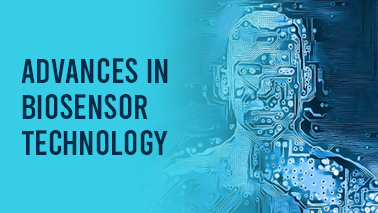
Tags
Wearable Biosensors Conferences
Chemical Sensors and Biosensors Conferences
Bioelectronics Conferences 2024
Bioelectronics Conferences 2024 Europe
Biosensors Conferences 2024
Advances in Biosensors Conferences
Bioelectronics Conferences 2024 China
Biosensors Conferences 2024 USA
Biosensing Annual Conferences 2024
Bioelectronics Conferences 2024 USA
Biosensors Conferences 2024
Magneto Elastic Biosensors Conferences
Optical Biosensors Conferences
Electrochemical Biosensors Conferences
Biosensor Technology Conferences
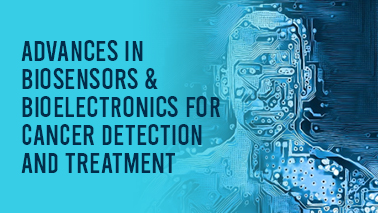
Tags
Bioelectronics Conferences 2024 USA
Optical Biosensors Conferences
Bioelectronics Conferences 2024
Chemical Sensors and Biosensors Conferences
Magneto Elastic Biosensors Conferences
Bioelectronics Conferences 2024 USA
Implantable Bioelectronics Conferences
Biosensors Conferences 2024 China
Biosensors Conferences 2024
Bioelectronics Conferences 2024 Asia
Bioelectronics Conferences 2024 Canada
Wearable Bioelectronics Conferences
Wearable Biosensors Conferences
Biosensing Meetings
Bioelectronics Conferences 2024 China
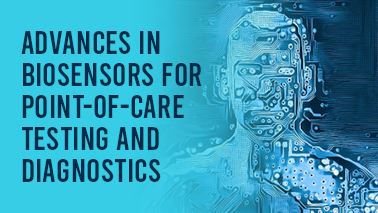
Tags
Biosensors Conferences 2024 USA
Implantable Bioelectronics Conferences
Magneto Elastic Biosensors Conferences
Biosensors Conferences 2024
Nanobiosensors Conferences
Electrochemical Biosensors Conferences
Biosensors Conferences 2024 Middle East
Biosensor Technology Conferences
Switchable Bioelectronics Conferences
Bioelectronics Conferences 2024 USA
Biosensing Annual Conferences 2024
Advances in Biosensors Conferences
Bioelectronics Conferences 2024
Bioelectronics Conferences 2024 Canada
Optical Biosensors Conferences
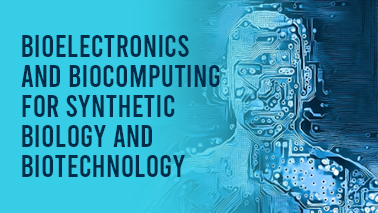
Tags
Biosensors Conferences 2024 USA
Biosensors Conferences 2024 Japan
Chemical Sensors and Biosensors Conferences
Biosensing Annual Conferences 2024
Bioelectronics Conferences 2024 Europe
Biosensing Meetings
Biosensors Conferences 2024 China
Advances in Biosensors Conferences
Electrochemical Biosensors Conferences
Bioelectronics Conferences 2024 USA
Nanobiosensors Conferences
Wearable Bioelectronics Conferences
Biosensors Conferences
Switchable Bioelectronics Conferences
Bioelectronics Conferences 2024 Asia
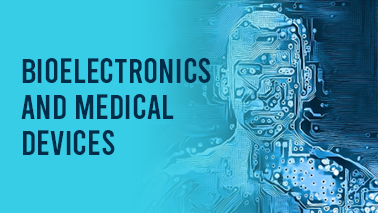
Tags
Biosensors Conferences 2024 USA
Biosensors Conferences
Bioelectronics Conferences 2024
Wearable Biosensors Conferences
Nanobiosensors Conferences
Biosensors Conferences 2024
Biosensors Conferences 2024 China
Biosensors Conferences 2024 Japan
Bioelectronics Conferences 2024 China
Bioelectronics Conferences 2024 USA
Biosensor Technology Conferences
Biosensing Annual Conferences 2024
Chemical Sensors and Biosensors Conferences
Biosensors Conferences 2024
Optical Biosensors Conferences
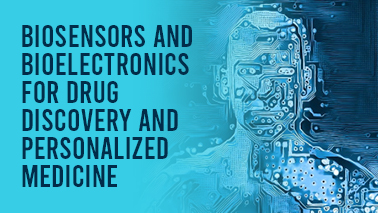
Tags
Biosensors Conferences
Biosensors Conferences 2024 USA
Implantable Bioelectronics Conferences
Bioelectronics Conferences 2024 Europe
Biosensing Meetings
Biosensor Technology Conferences
Nanobiosensors Conferences
Bioelectronics Conferences 2024 USA
Switchable Bioelectronics Conferences
Bioelectronics Conferences 2024 Canada
Biosensors Conferences 2024 China
Biosensors Conferences 2024
Advances in Biosensors Conferences
Biosensors Conferences 2024 Middle East
Bioelectronics Conferences 2024 USA
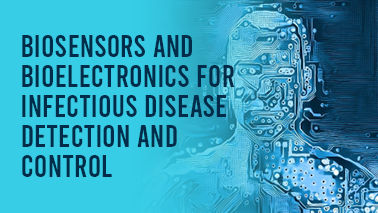
Tags
Biosensing Annual Conferences 2024
Bioelectronics Conferences 2024 Canada
Biosensors Conferences
Implantable Bioelectronics Conferences
Wearable Bioelectronics Conferences
Bioelectronics Conferences 2024 Asia
Biosensors Conferences 2024 China
Bioelectronics Conferences 2024
Bioelectronics Conferences 2024 Europe
Biosensors Conferences 2024
Advances in Biosensors Conferences
Biosensing Meetings
Electrochemical Biosensors Conferences
Bioelectronics Conferences 2024 China
Optical Biosensors Conferences
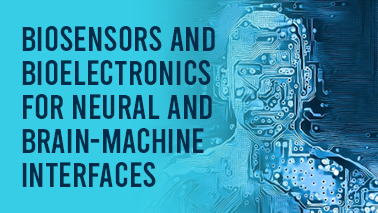
Tags
Bioelectronics Conferences 2024 Europe
Advances in Biosensors Conferences
Chemical Sensors and Biosensors Conferences
Wearable Biosensors Conferences
Biosensors Conferences 2024 Middle East
Biosensors Conferences 2024
Biosensors Conferences 2024
Bioelectronics Conferences 2024 Asia
Biosensors Conferences 2024 Japan
Biosensing Meetings
Switchable Bioelectronics Conferences
Wearable Bioelectronics Conferences
Electrochemical Biosensors Conferences
Biosensors Conferences 2024 USA
Nanobiosensors Conferences
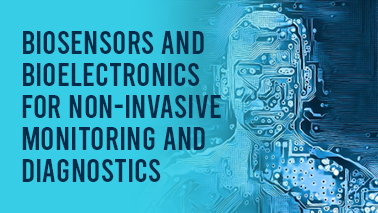
Tags
Implantable Bioelectronics Conferences
Wearable Bioelectronics Conferences
Biosensors Conferences 2024 Japan
Switchable Bioelectronics Conferences
Biosensors Conferences 2024
Nanobiosensors Conferences
Biosensors Conferences
Bioelectronics Conferences 2024 Europe
Optical Biosensors Conferences
Electrochemical Biosensors Conferences
Wearable Biosensors Conferences
Magneto Elastic Biosensors Conferences
Biosensors Conferences 2024 USA
Biosensing Annual Conferences 2024
Bioelectronics Conferences 2024 USA
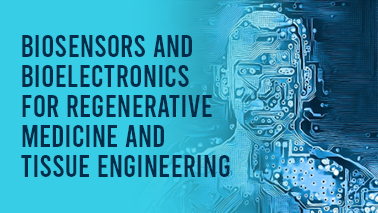
Tags
Electrochemical Biosensors Conferences
Biosensors Conferences 2024 Japan
Bioelectronics Conferences 2024 Asia
Biosensor Technology Conferences
Switchable Bioelectronics Conferences
Wearable Bioelectronics Conferences
Biosensors Conferences
Biosensors Conferences 2024 USA
Chemical Sensors and Biosensors Conferences
Wearable Biosensors Conferences
Biosensors Conferences 2024
Biosensors Conferences 2024 Middle East
Magneto Elastic Biosensors Conferences
Implantable Bioelectronics Conferences
Biosensors Conferences 2024
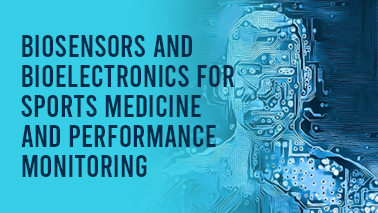
Tags
Wearable Bioelectronics Conferences
Biosensors Conferences 2024
Bioelectronics Conferences 2024 USA
Optical Biosensors Conferences
Wearable Biosensors Conferences
Bioelectronics Conferences 2024 USA
Bioelectronics Conferences 2024 China
Biosensors Conferences
Bioelectronics Conferences 2024 Europe
Biosensors Conferences 2024 Middle East
Biosensors Conferences 2024 Japan
Biosensing Annual Conferences 2024
Biosensors Conferences 2024
Biosensors Conferences 2024 China
Biosensors Conferences 2024 USA
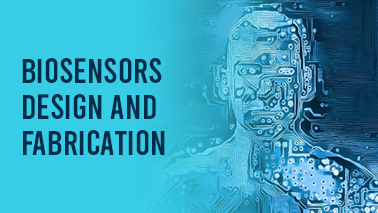
Tags
Biosensors Conferences
Biosensors Conferences 2024 USA
Biosensing Annual Conferences 2024
Wearable Biosensors Conferences
Biosensor Technology Conferences
Bioelectronics Conferences 2024 Europe
Biosensors Conferences 2024
Biosensors Conferences 2024 Japan
Bioelectronics Conferences 2024 USA
Electrochemical Biosensors Conferences
Nanobiosensors Conferences
Biosensors Conferences 2024 Middle East
Bioelectronics Conferences 2024 USA
Bioelectronics Conferences 2024
Implantable Bioelectronics Conferences
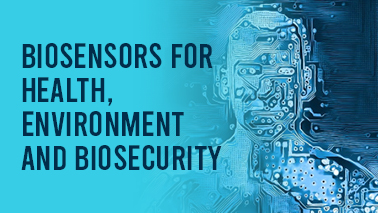
Tags
Wearable Biosensors Conferences
Biosensors Conferences 2024 Middle East
Bioelectronics Conferences 2024 Europe
Optical Biosensors Conferences
Switchable Bioelectronics Conferences
Implantable Bioelectronics Conferences
Biosensors Conferences 2024
Chemical Sensors and Biosensors Conferences
Bioelectronics Conferences 2024 China
Bioelectronics Conferences 2024
Bioelectronics Conferences 2024 Canada
Magneto Elastic Biosensors Conferences
Advances in Biosensors Conferences
Electrochemical Biosensors Conferences
Biosensor Technology Conferences
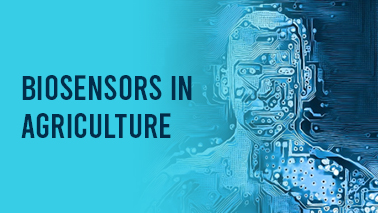
Tags
Biosensors Conferences 2024 Middle East
Biosensors Conferences 2024 USA
Bioelectronics Conferences 2024
Biosensing Meetings
Switchable Bioelectronics Conferences
Implantable Bioelectronics Conferences
Biosensors Conferences
Bioelectronics Conferences 2024 Europe
Biosensors Conferences 2024 Japan
Bioelectronics Conferences 2024 USA
Wearable Bioelectronics Conferences
Electrochemical Biosensors Conferences
Biosensing Annual Conferences 2024
Wearable Biosensors Conferences
Biosensor Technology Conferences
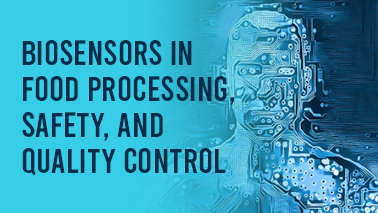
Tags
Bioelectronics Conferences 2024 USA
Bioelectronics Conferences 2024 Asia
Biosensors Conferences 2024 Middle East
Biosensors Conferences 2024 USA
Magneto Elastic Biosensors Conferences
Implantable Bioelectronics Conferences
Biosensor Technology Conferences
Chemical Sensors and Biosensors Conferences
Biosensing Annual Conferences 2024
Wearable Biosensors Conferences
Bioelectronics Conferences 2024 China
Biosensing Meetings
Electrochemical Biosensors Conferences
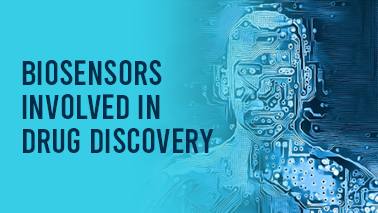
Tags
Biosensing Meetings
Biosensors Conferences 2024 Japan
Bioelectronics Conferences 2024 Canada
Biosensing Annual Conferences 2024
Biosensors Conferences
Wearable Bioelectronics Conferences
Switchable Bioelectronics Conferences
Optical Biosensors Conferences
Electrochemical Biosensors Conferences
Biosensors Conferences 2024 Middle East
Wearable Biosensors Conferences
Biosensors Conferences 2024 USA
Biosensors Conferences 2024
Bioelectronics Conferences 2024 USA
Chemical Sensors and Biosensors Conferences
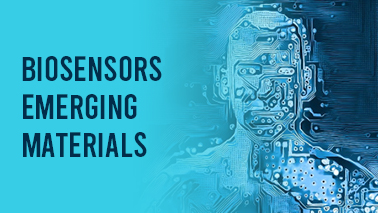
Tags
Bioelectronics Conferences 2024 Canada
Biosensing Meetings
Biosensing Annual Conferences 2024
Electrochemical Biosensors Conferences
Wearable Bioelectronics Conferences
Implantable Bioelectronics Conferences
Biosensors Conferences 2024
Biosensors Conferences 2024 USA
Wearable Biosensors Conferences
Bioelectronics Conferences 2024 Europe
Optical Biosensors Conferences
Biosensors Conferences 2024 China
Bioelectronics Conferences 2024
Bioelectronics Conferences 2024 Asia
Advances in Biosensors Conferences
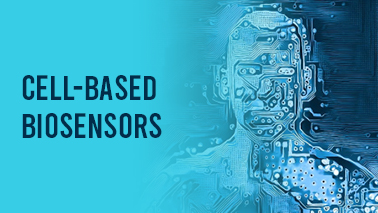
Tags
Bioelectronics Conferences 2024 China
Optical Biosensors Conferences
Biosensing Annual Conferences 2024
Biosensor Technology Conferences
Wearable Bioelectronics Conferences
Biosensing Meetings
Bioelectronics Conferences 2024
Biosensors Conferences 2024
Switchable Bioelectronics Conferences
Biosensors Conferences 2024 USA
Implantable Bioelectronics Conferences
Biosensors Conferences 2024
Bioelectronics Conferences 2024 Asia
Bioelectronics Conferences 2024 Europe
Magneto Elastic Biosensors Conferences
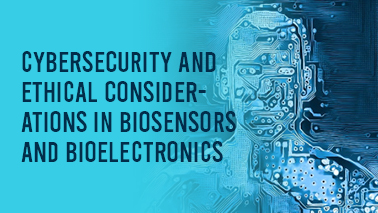
Tags
Biosensors Conferences 2024 China
Electrochemical Biosensors Conferences
Biosensors Conferences 2024
Biosensors Conferences 2024
Bioelectronics Conferences 2024 USA
Biosensors Conferences 2024 Japan
Bioelectronics Conferences 2024 Europe
Biosensing Annual Conferences 2024
Biosensor Technology Conferences
Bioelectronics Conferences 2024 Asia
Biosensing Meetings
Magneto Elastic Biosensors Conferences
Implantable Bioelectronics Conferences
Bioelectronics Conferences 2024
Optical Biosensors Conferences
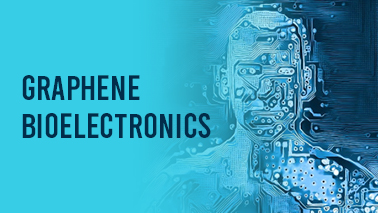
Tags
Electrochemical Biosensors Conferences
Biosensing Annual Conferences 2024
Advances in Biosensors Conferences
Bioelectronics Conferences 2024 China
Magneto Elastic Biosensors Conferences
Bioelectronics Conferences 2024 Europe
Biosensing Meetings
Biosensors Conferences 2024 Japan
Wearable Biosensors Conferences
Bioelectronics Conferences 2024 Asia
Bioelectronics Conferences 2024
Chemical Sensors and Biosensors Conferences
Bioelectronics Conferences 2024 Canada
Nanobiosensors Conferences
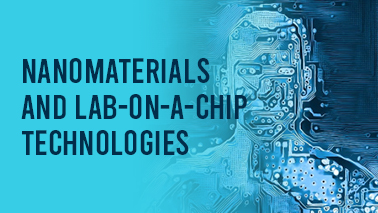
Tags
Advances in Biosensors Conferences
Optical Biosensors Conferences
Nanobiosensors Conferences
Implantable Bioelectronics Conferences
Switchable Bioelectronics Conferences
Bioelectronics Conferences 2024 Canada
Magneto Elastic Biosensors Conferences
Bioelectronics Conferences 2024 USA
Biosensors Conferences 2024 Middle East
Biosensing Annual Conferences 2024
Biosensors Conferences 2024 Japan
Bioelectronics Conferences 2024
Biosensors Conferences 2024 China
Bioelectronics Conferences 2024 China
Biosensing Meetings
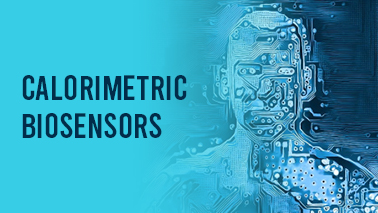
Tags
Biosensors Conferences 2024 Middle East
Nanobiosensors Conferences
Electrochemical Biosensors Conferences
Bioelectronics Conferences 2024 Europe
Switchable Bioelectronics Conferences
Chemical Sensors and Biosensors Conferences
Implantable Bioelectronics Conferences
Biosensors Conferences 2024 USA
Magneto Elastic Biosensors Conferences
Advances in Biosensors Conferences
Wearable Bioelectronics Conferences
Wearable Biosensors Conferences
Biosensors Conferences 2024
Bioelectronics Conferences 2024 Asia
Bioelectronics Conferences 2024 China
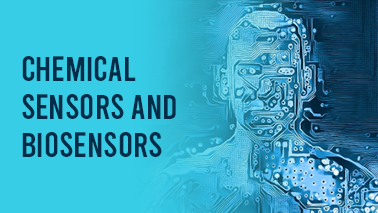
Tags
Chemical Sensors and Biosensors Conferences
Bioelectronics Conferences 2024 Asia
Implantable Bioelectronics Conferences
Biosensors Conferences 2024
Bioelectronics Conferences 2024 USA
Switchable Bioelectronics Conferences
Biosensors Conferences 2024
Biosensors Conferences 2024 USA
Biosensor Technology Conferences
Bioelectronics Conferences 2024 China
Optical Biosensors Conferences
Wearable Bioelectronics Conferences
Bioelectronics Conferences 2024 Europe
Biosensing Meetings
Biosensors Conferences 2024 Japan
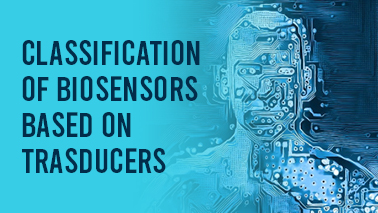
Tags
Optical Biosensors Conferences
Magneto Elastic Biosensors Conferences
Wearable Bioelectronics Conferences
Nanobiosensors Conferences
Biosensors Conferences
Bioelectronics Conferences 2024 China
Bioelectronics Conferences 2024 USA
Biosensor Technology Conferences
Biosensing Meetings
Bioelectronics Conferences 2024 Asia
Biosensors Conferences 2024 China
Electrochemical Biosensors Conferences
Bioelectronics Conferences 2024 Canada
Biosensors Conferences 2024
Implantable Bioelectronics Conferences
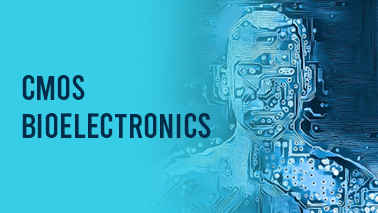
Tags
Bioelectronics Conferences 2024 USA
Biosensor Technology Conferences
Wearable Bioelectronics Conferences
Bioelectronics Conferences 2024 Europe
Biosensors Conferences 2024 USA
Biosensors Conferences
Biosensors Conferences 2024 Japan
Nanobiosensors Conferences
Optical Biosensors Conferences
Bioelectronics Conferences 2024
Biosensors Conferences 2024 Middle East
Electrochemical Biosensors Conferences
Biosensors Conferences 2024
Chemical Sensors and Biosensors Conferences
Implantable Bioelectronics Conferences
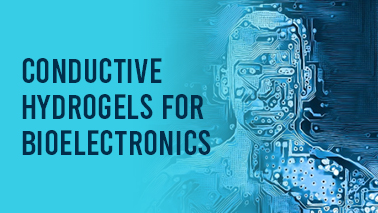
Tags
Switchable Bioelectronics Conferences
Biosensors Conferences 2024 Middle East
Biosensors Conferences 2024
Biosensors Conferences 2024
Biosensors Conferences 2024 Japan
Bioelectronics Conferences 2024 Europe
Bioelectronics Conferences 2024 USA
Magneto Elastic Biosensors Conferences
Biosensing Meetings
Chemical Sensors and Biosensors Conferences
Bioelectronics Conferences 2024 China
Biosensing Annual Conferences 2024
Bioelectronics Conferences 2024 Canada
Implantable Bioelectronics Conferences
Wearable Bioelectronics Conferences
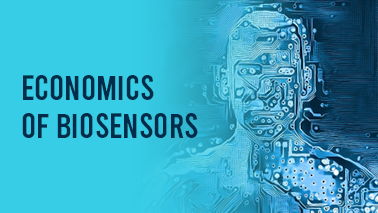
Tags
Bioelectronics Conferences 2024
Bioelectronics Conferences 2024 Europe
Biosensors Conferences 2024 Middle East
Chemical Sensors and Biosensors Conferences
Bioelectronics Conferences 2024 USA
Biosensors Conferences 2024
Biosensor Technology Conferences
Biosensors Conferences
Magneto Elastic Biosensors Conferences
Wearable Biosensors Conferences
Biosensors Conferences 2024
Wearable Bioelectronics Conferences
Biosensors Conferences 2024 USA
Biosensing Meetings
Switchable Bioelectronics Conferences
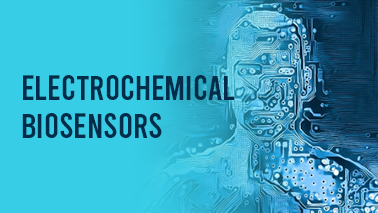
Tags
Electrochemical Biosensors Conferences
Implantable Bioelectronics Conferences
Biosensing Meetings
Wearable Bioelectronics Conferences
Biosensors Conferences
Bioelectronics Conferences 2024 China
Bioelectronics Conferences 2024 USA
Optical Biosensors Conferences
Bioelectronics Conferences 2024 USA
Biosensors Conferences 2024 USA
Bioelectronics Conferences 2024
Bioelectronics Conferences 2024 Canada
Chemical Sensors and Biosensors Conferences
Biosensor Technology Conferences
Bioelectronics Conferences 2024 Asia
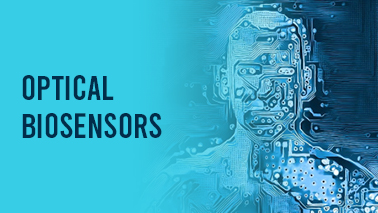
Tags
Biosensors Conferences
Biosensors Conferences 2024 Middle East
Magneto Elastic Biosensors Conferences
Optical Biosensors Conferences
Nanobiosensors Conferences
Chemical Sensors and Biosensors Conferences
Switchable Bioelectronics Conferences
Biosensing Annual Conferences 2024
Bioelectronics Conferences 2024 Europe
Biosensors Conferences 2024 China
Advances in Biosensors Conferences
Biosensor Technology Conferences
Biosensors Conferences 2024
Bioelectronics Conferences 2024 China
Bioelectronics Conferences 2024 Asia
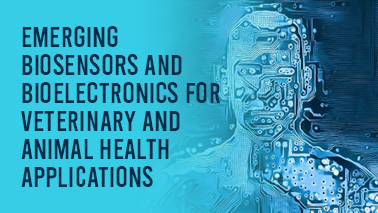
Tags
Wearable Bioelectronics Conferences
Biosensors Conferences 2024 China
Biosensing Annual Conferences 2024
Chemical Sensors and Biosensors Conferences
Biosensing Meetings
Magneto Elastic Biosensors Conferences
Biosensors Conferences 2024
Advances in Biosensors Conferences
Electrochemical Biosensors Conferences
Biosensors Conferences 2024 USA
Bioelectronics Conferences 2024 Asia
Biosensors Conferences
Bioelectronics Conferences 2024 USA
Bioelectronics Conferences 2024 USA
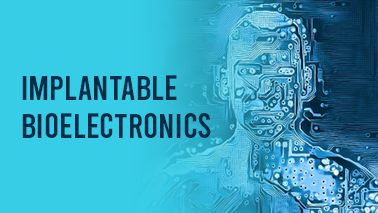
Tags
Implantable Bioelectronics Conferences
Biosensors Conferences 2024
Biosensing Annual Conferences 2024
Biosensors Conferences 2024 Middle East
Switchable Bioelectronics Conferences
Wearable Biosensors Conferences
Bioelectronics Conferences 2024 USA
Bioelectronics Conferences 2024 Canada
Bioelectronics Conferences 2024 USA
Biosensors Conferences 2024 China
Wearable Bioelectronics Conferences
Biosensor Technology Conferences
Optical Biosensors Conferences
Biosensing Meetings
Biosensors Conferences 2024
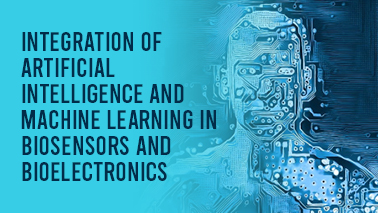
Tags
Biosensors Conferences 2024 China
Wearable Bioelectronics Conferences
Chemical Sensors and Biosensors Conferences
Biosensing Annual Conferences 2024
Optical Biosensors Conferences
Biosensors Conferences 2024
Switchable Bioelectronics Conferences
Biosensors Conferences 2024 USA
Magneto Elastic Biosensors Conferences
Bioelectronics Conferences 2024 USA
Biosensors Conferences 2024 Middle East
Electrochemical Biosensors Conferences
Implantable Bioelectronics Conferences
Advances in Biosensors Conferences
Biosensors Conferences 2024
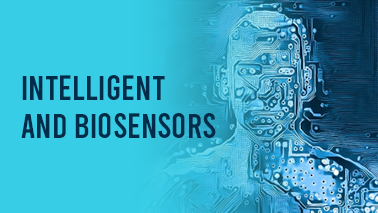
Tags
Bioelectronics Conferences 2024
Chemical Sensors and Biosensors Conferences
Bioelectronics Conferences 2024 Asia
Biosensors Conferences
Nanobiosensors Conferences
Biosensing Annual Conferences 2024
Switchable Bioelectronics Conferences
Bioelectronics Conferences 2024 Europe
Biosensors Conferences 2024 USA
Biosensors Conferences 2024 Middle East
Bioelectronics Conferences 2024 China
Biosensor Technology Conferences
Magneto Elastic Biosensors Conferences
Implantable Bioelectronics Conferences
Biosensors Conferences 2024 China
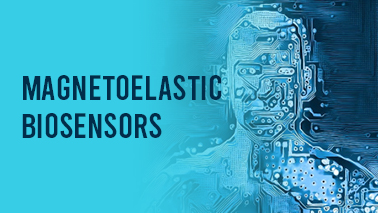
Tags
Biosensing Annual Conferences 2024
Bioelectronics Conferences 2024
Biosensors Conferences 2024
Chemical Sensors and Biosensors Conferences
Biosensors Conferences 2024 Middle East
Biosensors Conferences 2024 Japan
Switchable Bioelectronics Conferences
Advances in Biosensors Conferences
Wearable Biosensors Conferences
Bioelectronics Conferences 2024 Europe
Nanobiosensors Conferences
Bioelectronics Conferences 2024 China
Bioelectronics Conferences 2024 USA
Bioelectronics Conferences 2024 Canada
Biosensor Technology Conferences
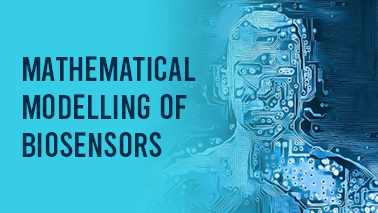
Tags
Biosensing Meetings
Chemical Sensors and Biosensors Conferences
Bioelectronics Conferences 2024 Asia
Bioelectronics Conferences 2024 USA
Biosensors Conferences 2024 Japan
Biosensing Annual Conferences 2024
Bioelectronics Conferences 2024 Europe
Biosensors Conferences 2024 USA
Implantable Bioelectronics Conferences
Biosensor Technology Conferences
Wearable Biosensors Conferences
Biosensors Conferences 2024
Biosensors Conferences 2024
Biosensors Conferences 2024 China
Nanobiosensors Conferences
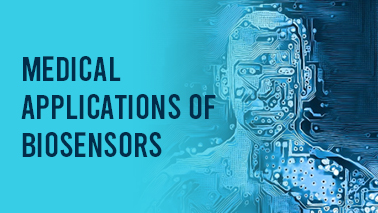
Tags
Biosensors Conferences 2024 China
Biosensors Conferences 2024 Middle East
Wearable Bioelectronics Conferences
Implantable Bioelectronics Conferences
Biosensors Conferences
Bioelectronics Conferences 2024 USA
Bioelectronics Conferences 2024 Asia
Bioelectronics Conferences 2024 Canada
Bioelectronics Conferences 2024 China
Bioelectronics Conferences 2024 Europe
Biosensors Conferences 2024
Advances in Biosensors Conferences
Biosensing Meetings
Nanobiosensors Conferences
Chemical Sensors and Biosensors Conferences
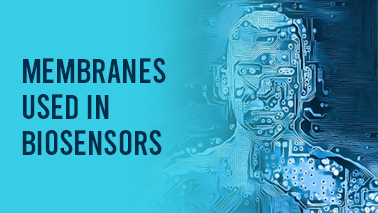
Tags
Wearable Biosensors Conferences
Switchable Bioelectronics Conferences
Biosensors Conferences
Biosensors Conferences 2024 Japan
Bioelectronics Conferences 2024 Canada
Biosensing Annual Conferences 2024
Bioelectronics Conferences 2024
Electrochemical Biosensors Conferences
Implantable Bioelectronics Conferences
Biosensors Conferences 2024
Bioelectronics Conferences 2024 China
Advances in Biosensors Conferences
Bioelectronics Conferences 2024 Europe
Bioelectronics Conferences 2024 Asia
Biosensor Technology Conferences
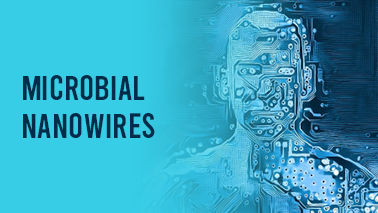
Tags
Biosensing Meetings
Bioelectronics Conferences 2024 Canada
Bioelectronics Conferences 2024 Europe
Biosensors Conferences 2024 China
Electrochemical Biosensors Conferences
Bioelectronics Conferences 2024 China
Biosensors Conferences 2024
Biosensing Annual Conferences 2024
Biosensors Conferences 2024
Switchable Bioelectronics Conferences
Biosensors Conferences 2024 USA
Optical Biosensors Conferences
Biosensors Conferences 2024 Japan
Advances in Biosensors Conferences
Bioelectronics Conferences 2024 Asia
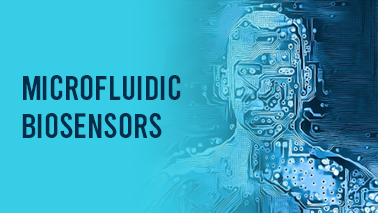
Tags
Advances in Biosensors Conferences
Nanobiosensors Conferences
Bioelectronics Conferences 2024 Europe
Biosensing Meetings
Bioelectronics Conferences 2024 USA
Bioelectronics Conferences 2024
Biosensors Conferences
Biosensing Annual Conferences 2024
Magneto Elastic Biosensors Conferences
Implantable Bioelectronics Conferences
Biosensors Conferences 2024
Optical Biosensors Conferences
Biosensors Conferences 2024 USA
Switchable Bioelectronics Conferences
Wearable Bioelectronics Conferences
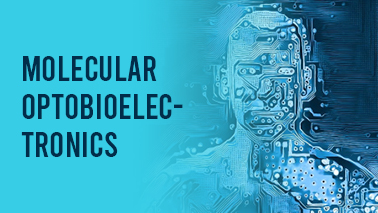
Tags
Bioelectronics Conferences 2024 Canada
Biosensor Technology Conferences
Nanobiosensors Conferences
Biosensors Conferences 2024
Wearable Bioelectronics Conferences
Chemical Sensors and Biosensors Conferences
Implantable Bioelectronics Conferences
Biosensors Conferences 2024
Electrochemical Biosensors Conferences
Biosensors Conferences 2024 Middle East
Bioelectronics Conferences 2024 USA
Biosensing Meetings
Wearable Biosensors Conferences
Optical Biosensors Conferences
Biosensors Conferences 2024 Japan
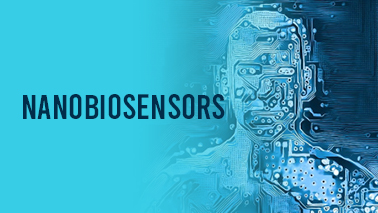
Tags
Wearable Bioelectronics Conferences
Optical Biosensors Conferences
Bioelectronics Conferences 2024 USA
Chemical Sensors and Biosensors Conferences
Biosensing Annual Conferences 2024
Biosensors Conferences 2024 Japan
Biosensors Conferences 2024 USA
Bioelectronics Conferences 2024 Europe
Implantable Bioelectronics Conferences
Bioelectronics Conferences 2024
Bioelectronics Conferences 2024 Asia
Biosensors Conferences
Biosensor Technology Conferences
Bioelectronics Conferences 2024 USA
Electrochemical Biosensors Conferences
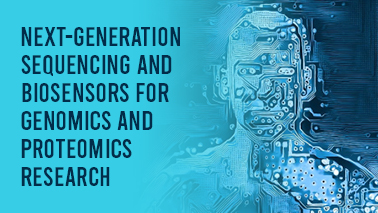
Tags
Magneto Elastic Biosensors Conferences
Bioelectronics Conferences 2024 China
Electrochemical Biosensors Conferences
Bioelectronics Conferences 2024 Asia
Nanobiosensors Conferences
Bioelectronics Conferences 2024 USA
Advances in Biosensors Conferences
Wearable Biosensors Conferences
Biosensors Conferences 2024
Biosensors Conferences 2024
Bioelectronics Conferences 2024 Canada
Bioelectronics Conferences 2024 Europe
Biosensors Conferences 2024 China
Biosensors Conferences 2024 USA
Chemical Sensors and Biosensors Conferences
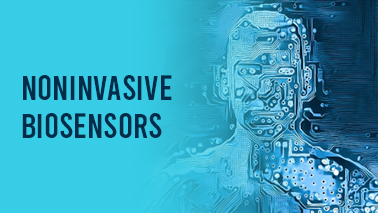
Tags
Biosensors Conferences
Switchable Bioelectronics Conferences
Magneto Elastic Biosensors Conferences
Biosensors Conferences 2024 Middle East
Biosensing Meetings
Bioelectronics Conferences 2024 USA
Bioelectronics Conferences 2024 China
Bioelectronics Conferences 2024
Biosensors Conferences 2024 China
Biosensing Annual Conferences 2024
Bioelectronics Conferences 2024 Canada
Wearable Bioelectronics Conferences
Optical Biosensors Conferences
Biosensors Conferences 2024 Japan
Biosensors Conferences 2024 USA
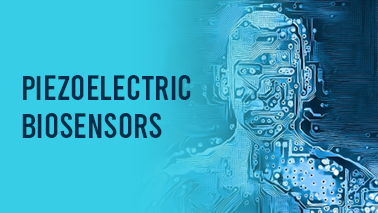
Tags
Bioelectronics Conferences 2024 USA
Magneto Elastic Biosensors Conferences
Biosensors Conferences 2024
Biosensors Conferences 2024 USA
Biosensors Conferences 2024 China
Advances in Biosensors Conferences
Bioelectronics Conferences 2024 Europe
Electrochemical Biosensors Conferences
Optical Biosensors Conferences
Bioelectronics Conferences 2024 USA
Wearable Biosensors Conferences
Biosensors Conferences 2024 Japan
Bioelectronics Conferences 2024
Biosensing Meetings
Bioelectronics Conferences 2024 Canada
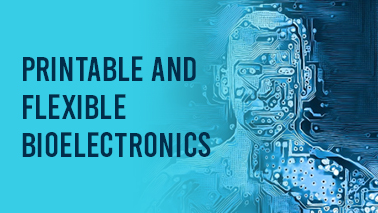
Tags
Biosensors Conferences 2024
Electrochemical Biosensors Conferences
Biosensors Conferences 2024 Middle East
Wearable Biosensors Conferences
Bioelectronics Conferences 2024 Asia
Biosensors Conferences 2024 USA
Biosensing Annual Conferences 2024
Biosensor Technology Conferences
Implantable Bioelectronics Conferences
Chemical Sensors and Biosensors Conferences
Biosensors Conferences 2024 China
Bioelectronics Conferences 2024 Europe
Magneto Elastic Biosensors Conferences
Biosensors Conferences 2024
Bioelectronics Conferences 2024 USA
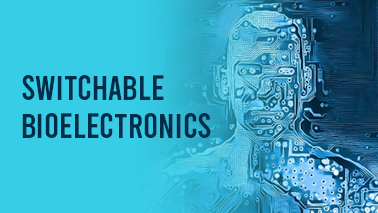
Tags
Bioelectronics Conferences 2024 Europe
Bioelectronics Conferences 2024
Biosensors Conferences
Biosensors Conferences 2024 USA
Chemical Sensors and Biosensors Conferences
Biosensors Conferences 2024 Middle East
Biosensors Conferences 2024 Japan
Optical Biosensors Conferences
Biosensing Annual Conferences 2024
Bioelectronics Conferences 2024 USA
Biosensor Technology Conferences
Switchable Bioelectronics Conferences
Biosensors Conferences 2024
Bioelectronics Conferences 2024 USA
Implantable Bioelectronics Conferences
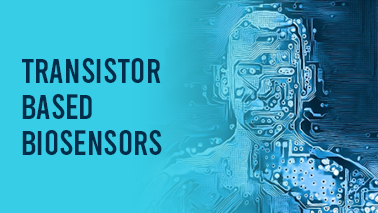
Tags
Chemical Sensors and Biosensors Conferences
Biosensors Conferences 2024 Japan
Biosensor Technology Conferences
Bioelectronics Conferences 2024 Canada
Optical Biosensors Conferences
Bioelectronics Conferences 2024 USA
Wearable Biosensors Conferences
Biosensors Conferences 2024 USA
Biosensors Conferences 2024
Nanobiosensors Conferences
Wearable Bioelectronics Conferences
Biosensors Conferences 2024
Implantable Bioelectronics Conferences
Magneto Elastic Biosensors Conferences
Switchable Bioelectronics Conferences
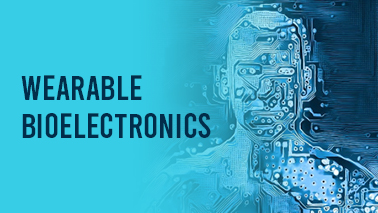
Tags
Bioelectronics Conferences 2024 Asia
Bioelectronics Conferences 2024 USA
Biosensors Conferences 2024 Middle East
Wearable Bioelectronics Conferences
Bioelectronics Conferences 2024 Canada
Biosensors Conferences 2024
Bioelectronics Conferences 2024 Europe
Biosensors Conferences 2024 Japan
Biosensing Annual Conferences 2024
Magneto Elastic Biosensors Conferences
Biosensors Conferences 2024
Advances in Biosensors Conferences
Optical Biosensors Conferences
Biosensors Conferences 2024 USA
Nanobiosensors Conferences
MARKET VALUATION OF BIOSENSORS IN US:
The market of biosensors was estimated at USD 26.8 billion in 2022, and from 2023 to 2030, it is anticipated to increase at a CAGR of 8.0%. The US market for biosensors is expected to grow at a CAGR of 8.2% from 2023 to 2030.
The growth of the US biosensors market is being driven by the increasing demand for point-of-care (POC) diagnostics, the rising incidence of chronic diseases, and the growing focus on personalized medicine. These devices are becoming increasingly popular due to their convenience and rapid results.
The major players in the US biosensors market include Abbott Laboratories, Johnson & Johnson, Roche Diagnostics, Siemens Healthineers, and Thermo Fisher Scientific.
These companies are investing in research and development to develop innovative biosensors for a variety of applications. They are also increasing their distribution networks to reach a wider audience.
Here are some of the key trends that are shaping the US biosensors market:
• Increasing demand for POC diagnostic
• Rising incidence of chronic diseases
• Growing focus on personalized medicine
• Development of new technologies such as nanotechnology and molecular diagnostics
• Expansion of distribution channels
The US biosensors market is a dynamic and growing market. The key players in the market are constantly innovating and developing new products to meet the needs of the market. The market is expected to continue to grow in the coming years, driven by the factors mentioned above.
MARKET VALUATION OF BIOSENSORS IN EUROPE:
The European biosensors market was valued at USD 22.18 billion in 2022 and is expected to reach USD 31.87 billion by 2027, registering a CAGR of 6.64% during the forecast period. The growth of the market is driven by the increasing demand for point-of-care (POC) diagnostics, rising prevalence of chronic diseases, and technological advancements in biosensors.
Here are some of the challenges faced by the European biosensors market:
• High cost of biosensors
• Stringent regulatory requirements
• Lack of awareness about biosensors
Overall, the European biosensors market is expected to grow at a healthy CAGR during the forecast period. The factors mentioned above boost the market's evolution. However, the market faces some challenges, which could hinder its growth to some extent.
MARKET VALUATION OF BIOSENSORS IN MIDDLE EAST:
The Middle East and Africa (MEA) biosensors market is expected to grow at a CAGR of 8.5% from 2022 to 2030. The market is driven by the rising prevalence of chronic diseases, increasing demand for point-of-care (POC) diagnostics, and growing government initiatives to improve healthcare infrastructure in the region.
The MEA biosensors market is segmented by technology, application, and end-user. By technology, the market is segmented into electrochemical biosensors, optical biosensors, and piezoelectric biosensors. Electrochemical biosensors are the largest segment of the market, owing to their high sensitivity and specificity.
Optical biosensors are the fastest growing segment, due to their advantages such as portability, ease of use, and low cost.
The following are some of the key drivers of the MEA biosensors market:
Rising prevalence of chronic diseases: The prevalence of chronic diseases such as diabetes, cancer, and cardiovascular diseases is rising in the MEA region. This is driving the demand for biosensors for early diagnosis and monitoring of these diseases.
Increasing demand for point-of-care (POC) diagnostics: POC diagnostics are becoming increasingly popular in the MEA region due to their advantages such as faster results, ease of use, and lower cost. Biosensors are a key enabling technology for POC diagnostics.
Growing government initiatives to improve healthcare infrastructure: Governments in the MEA region are investing in improving healthcare infrastructure. This includes investing in the development of new hospitals and clinics, as well as the procurement of new medical equipment. This is creating opportunities for the growth of the biosensors market.
The following are some of the challenges faced by the MEA biosensors market:
High cost of biosensors: Biosensors are relatively expensive devices. This can be a barrier to their adoption in some countries in the region.
Lack of skilled professionals: There is a lack of skilled professionals in the MEA region to support the use of biosensors. This can be a challenge for the growth of the market.
Regulatory challenges: There are some regulatory challenges associated with the use of biosensors in the MEA region. This can slow down the adoption of these devices.
MARKET VALUATION OF BIOSENSORS IN ASIA:
The major players in the Asia-Pacific biosensors market are Abbott Laboratories, Johnson & Johnson, Siemens Healthcare, Roche Diagnostics, and Becton, Dickinson and Company. These companies are engaged in developing innovative biosensors for various applications.
Here are some of the key trends that are driving the growth of the Asia-Pacific biosensors market:
Rising prevalence of chronic diseases: The increasing prevalence of chronic diseases such as diabetes, cancer, and cardiovascular diseases is driving the demand for biosensors for diagnosis and monitoring.
Growing demand for point-of-care testing: The increasing demand for point-of-care testing is driving the demand for portable and user-friendly biosensors.
Growing government initiatives to promote early diagnosis and preventive healthcare: The growing government initiatives to promote early diagnosis and preventive healthcare are also driving the demand for biosensors.
Technological advancements: The technological advancements in biosensors such as miniaturization, integration, and multiplexing are also driving the growth of the market.
MARKET VALUATION OF BIOELECTRONICS IN US:
The bioelectronics market in the US is expected to reach a value of US$25.27 billion by 2030, growing at a CAGR of 10.62% from 2022 to 2030. The US is the largest market for bioelectronics, accounting for a share of 35.2% in 2022. The growth of the bioelectronics market in the US is being driven by a number of factors, including:
The increasing prevalence of chronic diseases, such as diabetes, heart disease, and cancer.
• The growing aging population.
• Increasing demand for minimally invasive treatment.
• The increasing investment in research and development of bioelectronic devices.
The increasing number of collaborations between pharmaceutical companies, medical device manufacturers, and academic institutions.
The bioelectronics market is segmented into the following:
• By product: Implantable devices, wearable devices, diagnostic devices, and therapeutic devices.
• By application: Neurology, cardiology, ophthalmology, and dermatology.
• By end-user: Hospitals, clinics, and research institutes.
The wearable devices segment is expected to grow at the highest CAGR during the forecast period. This is due to the increasing demand for wearable devices that can monitor health data and provide real-time feedback to users.
The diagnostic devices segment is also expected to grow at a significant rate during the forecast period. This is due to the increasing demand for devices that can diagnose diseases at an early stage.
The therapeutic devices segment is expected to grow at a moderate rate during the forecast period. This is due to the increasing demand for devices that can treat diseases without surgery or other invasive procedures.
The bioelectronics market is a rapidly growing market with a lot of potential. The market is expected to continue to grow in the coming years due to the factors mentioned above.
MARKET VALUATION OF BIOELECTRONICS IN EUROPE:
The bioelectronics market in Europe is projected to reach a value of $2.35 billion by 2028, growing at a CAGR of 5.7% from 2022 to 2028. The market is driven by the increasing demand for bioelectronics in the healthcare sector, the growing prevalence of chronic diseases, and the rising focus on personalized medicine.
The European bioelectronics market is segmented by product type, application, and geography. By product type, the market is segmented into bio-electronic devices, bio-electronic medicine, and bio-electronic technology. Bio-electronic devices are the largest segment of the market, accounting for a share of over 60% in 2022. This is due to the increasing demand for implantable medical devices, such as pacemakers and defibrillators.
MARKET VALUATION OF BIOELECTRONICS IN MIDDLE EAST:
The bioelectronics market in the Middle East is expected to grow at a CAGR of 9.3% from 2023 to 2030. The market is being driven by the increasing demand for minimally invasive medical procedures, growing prevalence of chronic diseases, and rising disposable incomes.
The Middle East is home to a large and growing population with a high prevalence of chronic diseases such as diabetes, heart disease, and cancer. These diseases are major drivers of the demand for bioelectronics devices, which can be used to monitor and treat these conditions.
In addition, the Middle East is also seeing a growing number of minimally invasive medical procedures. These procedures are less invasive than traditional surgery and often require the use of bioelectronics devices.
The rising disposable incomes in the Middle East are also contributing to the growth of the bioelectronics market. As people have more money to spend, they are more likely to invest in expensive medical treatments, including those that involve bioelectronics devices.
The bioelectronics market in the Middle East is a promising market with a lot of potential for growth. The factors mentioned above are expected to drive the market growth in the coming years.
Here are some of the key trends that are expected to shape the bioelectronics market in the Middle East in the coming years:
• Increasing adoption of minimally invasive medical procedures
• Growing prevalence of chronic diseases
• Rising disposable incomes
• Growing focus on personalized medicine
• Development of new bioelectronics devices
• Expansion of manufacturing and marketing operations by key players.
MARKET VALUATION OF BIOELECTRONICS IN ASIA:
The bioelectronics market in Asia is projected to grow at a CAGR of 11.5% from 2022 to 2030. Many factors, including a number of others, are causing this rise
The increasing number of chronic conditions like cancer, heart disease, and diabetes minimally invasive procedures in medicine are increasing in demand.
• The rising disposable incomes of people in Asia
• The increasing focus on personalized medicine
• The rapid development of new bioelectronics technologies
In 2022, the Asia bioelectronics market was valued at USD 16.9 billion. By 2030, it is projected to reach USD 40.2 billion.
The largest market for bioelectronics in Asia is China. The Chinese market is expected to grow at a CAGR of 12.5% from 2022 to 2030. Other major markets in Asia include Japan, India, and South Korea.
The increasing focus on personalized medicine is also a major driver of the bioelectronics market in Asia. Bioelectronics devices can be used to collect and analyze data about a patient's individual physiology. This information is used to enhance individual treatments procedure.
The rapid development of new bioelectronics technologies is also contributing to the growth of the market. New technologies, such as wearable bioelectronics and implantable bioelectronics, are opening up new possibilities for the diagnosis and treatment of diseases.
The bioelectronics market in Asia is a rapidly growing market. The factors discussed above are expected to continue to drive the growth of the market in the coming years.
Comprehensive List of 100 Prominent Biosensor Devices and Platforms:-
Glucose Monitoring System - For monitoring blood glucose levels, commonly used by people with diabetes.
Continuous Glucose Monitor (CGM) - A device that tracks glucose levels throughout the day and night.
Lactate Biosensor - To monitor lactate levels in the bloodstream, often used in sports science or critical care settings.
Cholesterol Biosensor - To determine cholesterol levels in blood samples.
Oxygen Biosensor - A device that measures the level of oxygen in various environments, such as blood or water.
DNA Biosensor - Devices used for detecting specific DNA sequences, often used in research and medical diagnostics.
pH Biosensor - A sensor that measures the pH level in various biological and environmental samples.
Potentiometric Biosensor - Measures the electric potential of a solution to determine the concentration of specific ions.
Amperometric Biosensor - A sensor that works by measuring current resulting from an electrochemical oxidation or reduction process.
Optical Biosensor - Utilizes optical properties to detect biological molecules.
Surface Plasmon Resonance (SPR) Biosensor - A sensor utilizing the SPR phenomenon to detect variations in refractive index caused by biomolecular interactions.
Quartz Crystal Microbalance (QCM) Biosensor - A mass sensitive sensor that can detect nanogram levels of mass change.
Impedimetric Biosensor - Measures the impedance of a solution to determine various biochemical parameters.
Immunosensor - Biosensors that use antibodies to detect specific antigens.
Enzyme-based Biosensor - Utilizes enzymes as the biological sensing element to detect target analytes.
Fluorescent Biosensor - Uses fluorescent markers to detect the presence and concentration of specific molecules.
Thermometric Biosensor - Measures changes in temperature caused by biochemical reactions to detect specific molecules.
Piezoelectric Biosensor - Utilizes the piezoelectric effect to detect changes in mass or mechanical properties due to molecular binding.
Affinity Biosensor - A sensor that utilizes molecular affinity principles to detect specific molecules.
Nanowire Biosensor - Utilizes nanowires as sensing elements to detect nanoscale changes in electrical properties caused by molecular interactions.
Microfluidic Biosensor - Integrates microfluidic channels and biosensing elements to achieve high-throughput or sensitive biomolecular analyses.
Fiber Optic Biosensor - Utilizes optical fibers to transmit light signals modulated by biomolecular interactions.
Magnetic Biosensor - Uses magnetic particles or elements to detect molecular interactions through changes in magnetic properties.
Ingestible Biosensor - A sensor that can be ingested to monitor various physiological parameters from within the gastrointestinal tract.
Wearable Biosensor - Sensors that can be worn on the body to continuously monitor various physiological parameters.
Microneedle Biosensor - Biosensors using microneedles for interstitial fluid sampling.
Cardiac Marker Biosensor - For detecting markers of cardiac events.
Nitrate Biosensor - To determine nitrate levels in environmental samples.
Hydrogen Peroxide Biosensor - Measures levels of hydrogen peroxide in various samples.
Osmotic Pressure Biosensor - For monitoring osmotic pressure in bodily fluids.
Organophosphate Biosensor - Detects the presence of organophosphate compounds, commonly used in pesticide detection.
Ethanol Biosensor - For monitoring ethanol content in blood or other samples.
Cyanobacteria Biosensor - To monitor the presence and concentration of cyanobacteria.
Acetylcholine Biosensor - Monitors levels of acetylcholine in biological samples.
Serotonin Biosensor - Used to detect levels of serotonin in biological samples.
Dopamine Biosensor - For monitoring dopamine concentrations in biological systems.
Calcium Biosensor - Measures levels of calcium in biological systems.
Lead Biosensor - Used to detect lead in environmental samples.
Uric Acid Biosensor - Measures the concentration of uric acid in bodily fluids.
Creatinine Biosensor - To determine creatinine levels in biological samples.
Urea Biosensor - Monitors urea concentrations in biological samples.
Hemoglobin A1c Biosensor - Measures levels of Hemoglobin A1c in blood, often used for diabetes management.
Potassium Biosensor - Monitors potassium levels in biological samples.
Sodium Biosensor - For determining sodium concentrations in biological samples.
Chloride Biosensor - Used to measure chloride levels in various samples.
Magnesium Biosensor - Monitors magnesium concentrations in biological systems.
Zinc Biosensor - For detecting zinc levels in biological and environmental samples.
Iron Biosensor - Used to monitor iron levels in biological samples.
Lactose Biosensor - To determine lactose content in dairy products.
Food Safety Biosensor - Devices developed for detecting pathogens and contaminants in food.
Water Quality Biosensor - Monitors the quality of water by detecting various contaminants.
BOD (Biological Oxygen Demand) Biosensor - Measures the BOD in environmental water samples.
Cortisol Biosensor - For monitoring cortisol levels in biological samples.
Insulin Biosensor - Measures insulin levels in the bloodstream.
Progesterone Biosensor - Monitors progesterone levels in biological samples.
Testosterone Biosensor - For determining testosterone levels in biological samples.
Estrogen Biosensor - Used to monitor estrogen levels in biological samples.
PTH (Parathyroid Hormone) Biosensor - Detects levels of PTH in the bloodstream.
Thyroxine Biosensor - Measures levels of thyroxine in biological samples.
C-Reactive Protein Biosensor - Monitors levels of C-reactive protein, an inflammatory marker.
Bilirubin Biosensor - For determining bilirubin concentrations in biological samples.
Aflatoxin Biosensor - Detects the presence of aflatoxins in food and feed samples.
E. coli Biosensor - Monitors the presence of E. coli bacteria in samples.
Salmonella Biosensor - Detects the presence of Salmonella bacteria in samples.
Legionella Biosensor - For determining Legionella bacteria concentrations in water samples.
Influenza Virus Biosensor - Monitors for the presence of influenza virus in samples.
HIV Biosensor - Detects the presence of HIV in biological samples.
Hepatitis B Biosensor - Monitors for the presence of hepatitis B virus in biological samples.
Hepatitis C Biosensor - For detecting hepatitis C virus in biological samples.
Zika Virus Biosensor - Detects the presence of Zika virus in samples.
Dengue Virus Biosensor - Monitors for the presence of dengue virus in samples.
Malaria Biosensor - For determining the presence of malaria parasites in blood samples.
Tuberculosis Biosensor - Detects the presence of Mycobacterium tuberculosis in samples.
Cancer Marker Biosensor - Monitors for the presence of various cancer markers in biological samples.
Alzheimer's Disease Biosensor - For detecting biomarkers associated with Alzheimer's disease.
Parkinson's Disease Biosensor - Monitors for biomarkers associated with Parkinson's disease.
Stroke Biosensor - Detects biomarkers associated with stroke events.
Sepsis Biosensor - For monitoring for biomarkers associated with sepsis.
Allergen Biosensor - Detects the presence of specific allergens in food and environmental samples.
Antibiotic Residue Biosensor - Monitors for the presence of antibiotic residues in food and environmental samples.
Heavy Metal Biosensor - For detecting heavy metals in environmental samples.
Radioactivity Biosensor - Monitors for the presence of radioactive substances in samples.
Amino Acid Biosensor - Detects levels of various amino acids in biological samples.
Vitamin Biosensor - Monitors for levels of various vitamins in biological samples.
Fatty Acid Biosensor - For detecting levels of fatty acids in biological samples.
Hormone Biosensor - Monitors for levels of various hormones in biological samples.
Lipid Biosensor - Detects levels of lipids in biological samples.
Antigen-Antibody Interaction Biosensor - Monitors antigen-antibody interactions in samples.
Cell-Based Biosensor - Uses living cells as a sensing element to monitor for various biological parameters.
RNA Biosensor - Monitors for levels of specific RNA molecules in samples.
MicroRNA Biosensor - Detects levels of specific microRNAs in biological samples.
Peptide Biosensor - Monitors for the presence of specific peptides in samples.
Microbial Biosensor - Uses microbes as sensing elements to detect various substances in samples.
Molecularly Imprinted Polymer Biosensor - Uses molecularly imprinted polymers as sensing elements to detect specific molecules.
Photoacoustic Biosensor - Uses the photoacoustic effect to detect various biological substances.
Photonic Crystal Biosensor - Uses photonic crystals as a sensing element to monitor for biomolecular interactions.
Terahertz Biosensor - Utilizes terahertz radiation to detect various biological substances.
Nanophotonic Biosensor - Uses nanophotonic structures to detect biomolecular interactions.
Graphene-Based Biosensor - Utilizes graphene as a sensing element to detect various biological substances.
Quantum Dot Biosensor - Uses quantum dots as a sensing element to detect biomolecular interactions.
Top 100 Global Biosensor Companies:-
Abbott Laboratories (USA) / Roche Diagnostics (Switzerland) / Siemens Healthineers (Germany) / Medtronic (Ireland) / BD (Becton, Dickinson and Company) (USA) / Johnson & Johnson (USA) / Thermo Fisher Scientific (USA) / GE Healthcare (USA) / Philips Healthcare (Netherlands) / Biacore (part of GE Healthcare, (USA) / Nova Biomedical (USA) / AgaMatrix (USA) / Quidel Corporation (USA) / Biosensors International Group (Singapore) LifeScan (USA) / Animas Corporation (USA, part of Johnson & Johnson) / Dexcom (USA) / ACON Laboratories (USA) / Universal Biosensors (Australia) / Sensirion AG (Switzerland) / Biodesix (USA) / Lifesensors (USA) / Neusoft Medical Systems (China) / YSI (a Xylem brand, USA) / Ortho Clinical Diagnostics (USA) / Bio-Rad Laboratories (USA) / Danaher Corporation (USA) / Sysmex Corporation (Japan) / Nipro Diagnostics (Japan) / Hologic (USA) / BioSensors Inc. (USA) / Pinnacle Technology (USA) / F. Hoffmann-La Roche Ltd (Switzerland) / Illumina (USA) / Analog Devices (USA) / Sony DADC (Austria) / NanoString Technologies (USA) / Cepheid (USA) / LifeSensors Inc (USA) / Biosensor Applications (Sweden) / Alere (USA, acquired by Abbott) / BiOptix Diagnostics (USA) / I-SENS, Inc. (South Korea) / Innovative Sensor Technology IST AG (Switzerland) / Conductive Technologies Inc. (USA) / LifeAssays (Sweden) / Nanomix (USA) / Potrero Medical (USA) / Integra LifeSciences (USA) / Quanterix (USA) / Biomedal (Spain) / Biomeme (USA) / bioMérieux (France) / Xsensio (Switzerland) / First Sensor AG (Germany) / Optiscan Biomedical (USA) / Rheonix, Inc. (USA) / Profusa (USA) / Biolinq (USA) / Sensonor (Norway) / Cardea Bio (USA) / NXP Semiconductors (Netherlands) / Endress+Hauser (Switzerland) / Mettler-Toledo International Inc. (Switzerland) / IDEX Health & Science (USA) / ABB (Switzerland) / AMS AG (Austria) / Honeywell (USA) / TE Connectivity (Switzerland) / Neoteryx (USA) / Avidity Biosciences (USA) / Owlstone Medical (UK) / TDK Corporation (Japan) / Valencell (USA) / Sphere Medical (UK, now part of EKF Diagnostics) / Genalyte, Inc. (USA) / Genspeed Biotech (Austria) / ApoCell, Inc. (USA) / Applied Nanodetectors (UK) / Sierra Sensors GmbH (Germany) / HMicro (USA) / Kyocera Corporation (Japan) / Randox Laboratories (UK) / Taiyo Yuden Co., Ltd. (Japan) / Amsys GmbH & Co. KG (Germany) / Melexis (Belgium) / Siloam Biosciences (USA) / Aistin Blue Oy (Finland) / SAW Instruments GmbH (Germany, part of X-FAB Silicon Foundries SE) / Drägerwerk AG (Germany) / Bartels Mikrotechnik GmbH (Germany) / Microfluidic ChipShop GmbH (Germany) / Micronit Microtechnologies B.V. (Netherlands) / Cambridgeshire County Council (UK) / InvenSense (USA, a TDK Group company) / InSilixa (USA) / Innovative Sensor Technology IST USA, Inc. (USA) / Sensirion AG Switzerland (Switzerland) / OPKO Health (USA) / EarlySense (Israel)
Leading 100 Global Biomedical Device Companies: -
Johnson & Johnson - USA / Roche Diagnostics - Switzerland / Siemens Healthineers - Germany / GE Healthcare - USA / Medtronic - Ireland / Philips - Netherlands / Abbott Laboratories - USA / Becton, Dickinson and Company - USA / Danaher Corporation - USA / Thermo Fisher Scientific - USA / Boston Scientific - USA / EssilorLuxottica - France / Stryker Corporation - USA / Baxter International - USA / Fresenius - Germany / Zimmer Biomet Holdings - USA / Novartis - Switzerland / Olympus Corporation - Japan / Cardinal Health - USA / Terumo Corporation - Japan / Smith & Nephew - UK / Alcon - Switzerland / Dentsply Sirona - USA / Sonova Holding - Switzerland / Mindray - China / B. Braun Melsungen - Germany / Hologic - USA / ResMed - USA / Qiagen - Netherlands / Illumina - USA / Intuitive Surgical - USA / Getinge Group - Sweden / Varian Medical Systems - USA / Sysmex Corporation - Japan / Toshiba Medical Systems Corporation - Japan / Agilent Technologies - USA / William Demant Holding - Denmark / Mölnlycke Health Care - Sweden / Biomerieux - France / Hoya Corporation - Japan / Hill-Rom Holdings - USA / Ecolab - USA / Edwards Lifesciences - USA / Hologic Inc. - USA / STERIS Corporation - Ireland / Waters Corporation - USA / PerkinElmer - USA / Nihon Kohden Corporation - Japan / Bio-Rad Laboratories - USA / ELEKTA - Sweden / Cantel Medical Corp. - USA / C.R. Bard - USA / Teleflex Incorporated - USA / Henry Schein - USA / Haemonetics - USA / ICU Medical - USA / Globus Medical - USA / Integra Lifesciences - USA / NuVasive - USA / Qiagen N.V. - Germany / West Pharmaceutical Services - USA / ABIOMED - USA / Masimo - USA / DexCom - USA / Insulet Corporation - USA / Penumbra - USA / Wright Medical Group - USA / Nevro Corp - USA / AtriCure - USA / Inogen - USA / Patterson Companies - USA / Natus Medical - USA / LivaNova - UK / Nipro Corporation - Japan / Orthofix Medical Inc. - USA / Cynosure - USA / Merit Medical Systems - USA / Conmed Corporation - USA / OSI Systems - USA / Accuray Incorporated - USA / Ansell - Australia / Nobel Biocare - Switzerland / Tandem Diabetes Care - USA / Gyrus ACMI - USA / Draegerwerk - Germany / Cooper Companies - USA / Sirtex Medical - Australia / Varex Imaging Corporation - USA / Integer Holdings Corporation - USA / Orasure Technologies - USA / Quidel Corporation - USA / NeoGenomics - USA / InMode - Israel / GenMark Diagnostics - USA / Luminex Corporation - USA / Cantel Medical - USA / Amedisys - USA / Natera - USA / Intersect ENT - USA / Invacare Corporation - USA
Leading Journals in Biosensors and Bioelectronics:-
Biosensors & Bioelectronics (Elsevier) / IEEE Transactions on Biomedical Engineering / Journal of Biomedical Materials Research Part A / Analytical Chemistry (ACS) / Biosensors (MDPI) / Sensors (MDPI) / Journal of Biosensors & Bioelectronic Systems / Biomedical Microdevices (Springer) / Journal of The Electrochemical Society / ACS Sensors / Bioelectrochemistry (Elsevier) / Lab on a Chip (Royal Society of Chemistry) / Microsystem Technologies (Springer) / Journal of Micromechanics and Microengineering (IOPscience) / Biochemical Engineering Journal (Elsevier) / Biomedical Signal Processing and Control (Elsevier) / Biotechnology and Bioengineering (Wiley) / Analytica Chimica Acta (Elsevier) / Biotechnology Advances (Elsevier) / Talanta (Elsevier) / Journal of Nanobiotechnology (Springer) / Analytical and Bioanalytical Chemistry (Springer) / Journal of Biomechanical Engineering (ASME) / Biomedical Optics Express (OSA) / Journal of Biophotonics (Wiley) / Measurement Science and Technology (IOPscience) / Micro and Nano Letters (IET) / Journal of Micro-Nano Mechatronics (Springer) / Journal of Nanotechnology in Engineering and Medicine (ASME) / Journal of Medical Signals & Sensors / Biodevices (SCITEPRESS) / BMC Biomedical Engineering / Frontiers in Bioengineering and Biotechnology / Biochemical Society Transactions (Portland Press) / Biomicrofluidics (AIP) / Biomedical Physics & Engineering Express (IOPscience) / Nano Research (Springer) / Journal of Nanoparticle Research (Springer) / Microfluidics and Nanofluidics (Springer) / Journal of Nanomaterials (Hindawi) / Nanotechnology (IOPscience) / Applied Nanoscience (Springer) / Nanomedicine: Nanotechnology, Biology and Medicine (Elsevier) / Journal of Nanoscience and Nanotechnology (American Scientific Publishers) / Nanoscale (Royal Society of Chemistry) / Nanoscale Research Letters (Springer) / Nanotechnology, Science and Applications (Dove Press) / Nano Letters (ACS) / ACS Nano / Nanophotonics (De Gruyter)
Top 60 Global Biosensors and Bioelectronics Associations and Societies:-
International Society for Biosensors and Bioelectronics (ISBB) / American Association of Pharmaceutical Scientists (AAPS) / IEEE Sensors Council / International Union of Pure and Applied Chemistry (IUPAC) / The Electrochemical Society (ECS) / The International Society of Electrochemistry (ISE) / American Chemical Society - Division of Analytical Chemistry / Biosensors & Bioelectronics Journal (Elsevier) / European Society for Sensor Research (EUROSENSOR) / The Institute of Measurement and Control (UK) / The Bioelectrochemical Society / International Association of Nanotechnology / Biomedical Engineering Society (BMES) / The European Biosensor Symposium (EBS) / The Royal Society of Chemistry (Analytical Division) / American Institute of Medical and Biological Engineering (AIMBE) / The American Physical Society (APS) - Division of Biological Physics / The Society for Experimental Biology and Medicine / Association for Clinical Biochemistry and Laboratory Medicine / International Society of Biomechanics (ISB) / Asia-Pacific Biosensors Consortium / The Australian Nanotechnology Network / The Japan Society of Applied Physics (JSAP) / The Swiss Society for Sensor and Measurement Science / Canadian Medical and Biological Engineering Society / German Society for Sensor Technology / Spanish Royal Society of Chemistry - Analytical Chemistry Division / Association of Biomedical Analysts (UK) / The International Federation for Medical and Biological Engineering (IFMBE) / Society for Biological Engineering (SBE) / European Society of Biomechanics (ESB) / International Society of Bioelectromagnetism (ISBEM) / American Society for Nanomedicine (ASNM) / Association of Medical Diagnostics Manufacturers (AMDM) / Biomedical Engineering Society of India (BMESI) / Chinese Society of Biomedical Engineering (CSBME) / European Federation of Clinical Chemistry and Laboratory Medicine (EFLM) / International Federation of Clinical Chemistry and Laboratory Medicine (IFCC) / The Biochemical Society (UK) / Australian Society for Biochemistry and Molecular Biology (ASBMB) / Brazilian Society of Biochemistry and Molecular Biology (SBBq) / European Peptide Society (EPS) / European Society for Photobiology (ESP) / International Society for Biological and Environmental Repositories (ISBER) / European Federation of Biotechnology (EFB) / American Society for Microbiology (ASM) / The Society for Industrial Microbiology and Biotechnology (SIMB) / International Society for Pharmaceutical Engineering (ISPE) / International Union of Biochemistry and Molecular Biology (IUBMB) / International Society for Computational Biology (ISCB) / The Biophysical Society / Federation of American Societies for Experimental Biology (FASEB) / The European Society for Biomaterials (ESB) / The Society for Biomaterials (USA) / The International Society for Biological and Environmental Repositories (ISBER) / Asia Pacific Association of Medical Journal Editors (APAME) / Latin American Federation of Clinical Biochemistry (FELAB) / African Society for Laboratory Medicine (ASLM) / International Society for Gerontechnology (ISG)
Contact us now and we will make your event unique & unforgettable
Sensor technology is becoming increasingly sophisticated, affordable, and ubiquitous. Sensors are becoming the human interface to the digital world and, when combined with machine learning (ML), make systems or devices more aware of what the human body is doing, about to do, or has just done. In this talk, we will demonstrate a system, based on miniaturized ultrasonic sensors, that can measure in real time a number of cardiovascular biomarkers, such as the pulse waveform, artery wall motion, pulse wave velocity and blood pressure. This system is non-invasive and easily wearable, thus has the opportunity to disappear into the background, allowing patients to track their internal health and well-being easily.

Cardiac mapping and ablation are critical in managing atrial fibrillation (AF), the most common cardiac arrhythmia. However, pulmonary veins (PV) isolation as ablation approach is limited with persistent AF cases, and ablation beyond PVs may be necessary due to atrial remodelling and additional AF active sites. Therefore, it is important to develop approaches for accurately identifying potential ablation sites in atria for improving AF management therapy. The aim of our study was to identify and visualize potential AF active sites by implementing our innovative similarity score methods in a clinical setting using bipolar intracardiac electrograms (iEGMs) recorded from swine models (n=4) during AF. Results of iEGMs analysis and active AF sites were then correlated with clinically established anatomical hallmarks of the left atria (LA). We demonstrated that AF active sites are distributed across a range of anatomical hallmarks, including both within and outside the PV regions. Our findings indicate that at the baseline AF, active AF sites were identified both within and outside the PV regions using the validated similarity score method. While PVI was effective in eliminating active sites within the PV regions, active AF sites persisted in non-PV regions. A significant transition of active sites from both PV and non-PV regions to primarily the roof wall in the Post PVI stage was observed, highlighting the need for further research to understand this phenomenon. The insights gained from this shift in AF active sites on post-PVI will be instrumental in refining our approaches to AF treatment, particularly in cases where conventional PVI techniques prove inadequate.

Innovative sensing and imaging tools for probing functions of individual live cells in a highly heterogenous cell population in real time would revolutionize early disease diagnosis and treatments. Current tools are unable to real-time probe molecular functions of single live cells with adequate quantitation, spatial and temporal resolutions and over an extended period of time. We have pioneered the development of a suite of highly innovative nanobiotechnologies, including photostable single plasmonic nanoparticle imaging probes, single molecule nanoparticle optical biosensors, and far-field photostable optical nanoscopy (PHOTON). We have demonstrated that these new tools can overcome the drawbacks of fluorescence-based imaging platforms for dynamic, single molecule and multiplexing imaging of single live cells with superior temporal and spatial resolutions and over a desired extended period of time. We have used these new tools to real-time study: (i) molecular cascades of signaling transduction pathways of single live cells, (ii) molecular mechanisms of multidrug resistance of single live cells, (iii) efficacies of individual drug nanocarriers, (iv) rare subsets of single cancer stem cells in tissue, and (v) native environments of developing embryos. In this plenary presentation, I will describe the design and development of these innovative single-nanoparticle optical biosensors and their wide ranges of applications. The work was supported by NIH and NSF.














